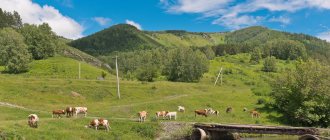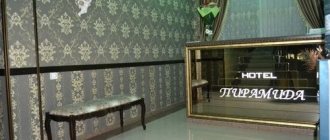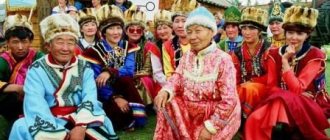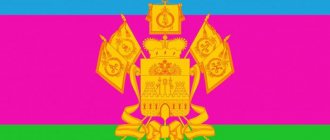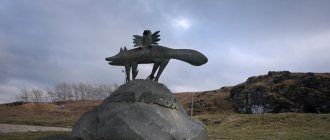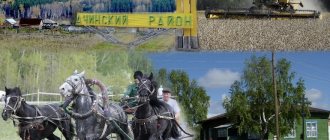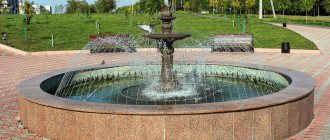History[edit]
Founded in 1938 as the mining village of Sotsgorodok
. Coal deposits on the territory of the modern city were discovered in the middle of the 19th century. Then the first small landowner and peasant mines appeared here. Widespread development of coal deposits began in the 30s. In 1938, high-speed construction of the Kurakhovskaya group of mines began (No. 10, No. 42, No. 43). Mine No. 42 “Kurakhovka” was put into operation in a record time on April 7, 1940. The enterprise was equipped with the latest technology - belt conveyors, heated machines. Initially, the mine produced 312 tons of coal per day with a design capacity of 1000 tons, and on the eve of the war - 510 tons.
By 1941, 3 mines were built, the population of the village was 5.0 thousand people. There were two shops, a high school, an outpatient clinic, and a club.
In 1958, Sotsgorodok and the adjacent villages of Komsomolsky, Oktyabrsky, Pervomaisky, Pobeda and Promploshchadka were transformed into a city with a modern name. In the post-war years, a cinder block plant (closed in 2008), a construction products plant, and a bakery (closed in 2002) were built here.
Gornyak: a city rich in polymetal
General information about the city of Gornyak
The center and main city of the Loktevsky district of the Altai Territory is Gornyak. The name of the city speaks for itself, because the main industry here is mining. If you look at the map to see where this town is located, it is located near the Altai Mountains in the valley of the Zolotukha River. And from here it’s just a stone’s throw to the border with Kazakhstan. Historians claim that Gornyak began to be built in 1942, when the fires of the Second World War roared. But apparently, this did not greatly influence its fate, because twenty-seven years later the village received the status of a city, which means that during this entire period of time it developed rapidly. According to statistical services, almost 14 thousand people live here.
Excursion into the history of the city of Gornyak
In the place where Gornyk now spreads its expanses, three centuries ago a settlement was founded, which was called Zolotukha. Of course, the emergence of the village was facilitated by a polymetallic mine. It was opened in the mid-eighteenth century. In the mid-nineteenth century, development at the Zolotushinsky mine ceased. The pause lasted almost a hundred years. After all, robots were resumed only in 1939.
Three years later, another village appeared near Zolotukha - Gornyak, which four years later became a regional center. And in 1969, the village of Gornyak was crossed out from the maps, and a proud city appeared. Together with the city, the Zolotoshinsky exploration and production mine is being built and developed. Mostly industrial facilities were built, and among residential buildings there were only two dormitories, the NKVD house, where there were 12 apartments, an eight-apartment building, 11 barracks and 3 four-apartment buildings. At the same time, one of the dormitories was given over to a school, and the second housed a medical center. Then they opened a maternity hospital and built a street pond. Also in 1950, reconstruction of the mine began to double production capacity. The village grew, another school appeared, then a factory, and the Gornyak waterway spread its branches. New residential buildings were also built. A memorable event for the miners was the opening of the Palace of Culture. And all district institutions were moved here from Loktev. Year after year, new mines, factories and social and cultural institutions appear here. The second reconstruction at the mine is underway.
Economy of a mountain town
It is not difficult to guess that the basis of the economy of this town is based on the mining industry. That is, the extraction of polymetallic ore mainly feeds local residents. The Altai Mining and Processing Plant enterprise is engaged in this industry. A bread factory, a clothing factory, a dairy factory, and an elevator make their contribution to the development of the city.
What is worth seeing in Gornyak
Those who visited this small industrial city for the first time, of course, should visit not only a tour of the factory and mines, but also walk through those places that have become a landmark of Gornyak. This is the Memorial of Glory, a monument to soldiers who died in Afghanistan and Chechnya. It is also worth visiting the Loktevsky Museum of Local Lore. After all, it is the employees of this institution who will be able to tell a lot of interesting things about the history of mining, as well as show the unforgettable places of the Zolotushinskoye deposit and the first miners’ settlement.
There are also architectural masterpieces here. These are memorable places, by visiting which guests will learn a lot about mining in the eighteenth and nineteenth centuries. You can visit the silver smelting plant and the quarries of the copper mine, which became the hallmark of the former regional center of Loktev. And near the city of Gornyak there are the remains of ancient settlements and graves of ancient tribes, which indicate that people lived here back in the second millennium BC - the first millennium AD. So, there is a lot to see in Gornyak and its surroundings.
Links[edit]
- Mining region: the city of Gornyak
| [ + ] Gornyak (city) - a city of miners | |
| Donetsk region | Belitskoye • Belozersk • Gorlovka • Gornyak • Dzerzhinsk • Dimitrov • Dobropolye • Donetsk • Enakievo • Zhdanovka • Kirovskoye • Krasnoarmeysk • Kurakhovka • Makeevka • Mospino • Novogrodovka • Novodonetsk • Rodinskoye • Selidovo • Snezhnoye • Torez • Uglegorsk • Ugledar • Ukrainsk • Khartsyzsk • Shakhtersk • Yunokommunarovsk |
| Dnepropetrovsk region | Pavlograd • Pershotravensk • Ternovka • Krivoy Rog |
| Galleries | Gorlovka • Enakievo • Krasny Luch |
Gornyak (Altai Territory)
Miner:| Staroaleiskoe | 36 (42) | IN | |
| 2 | Veseloyarsk | 41 (198) | NW |
| 3 | Zmeinogorsk | 53 (67) | IN |
| 4 | Rubtsovsk | 60 (160) | WITH |
| 5 | Kurya | 87 (123) | NE |
| 6 | Novoegorevskoe | 93 (197) | NW |
| 7 | Uglovskoe | 96 (251) | NW |
| 8 | Pospelikha | 111 (181) | WITH |
| 9 | Krasnoshchekovo | 115 (153) | NE |
| 10 | Newcomer | 134 (225) | WITH |
| 11 | Wolf | 136 (244) | NW |
| 12 | Shipunovo | 146 (263) | NE |
| 13 | Charyshskoe | 151 (441) | IN |
| 14 | Mikhailovskoe | 152 (516) | NW |
a brief description of
Located on the northwestern spurs of Altai, south of the Kolyvan ridge, in the steppe area in the extreme southwest of the region, 3 km from the river. Zolotukha (left tributary of Alei), 4 km from the railway. Neverovskaya station, 360 km southwest of Barnaul.
Territory (sq. km): 28
Historical sketch
Founded in the 18th century. like the village of Zolotukha.
The Zolotushinsky (polymetallic) mine was opened in 1751. Mining operations continued until the mid-19th century and were resumed in 1939.
In 1942, on the site of the ancient village of Zolotukha, a miners’ settlement of the Zolotushinsky mine under construction, named Gornyak, was formed. Since 1946 PGT Gornyak. City since 1969
The name Gornyak is due to the mining profile of the village.
Economy
Extraction and enrichment of polymetallic ores (JSC Altaipolymetal). Neverovskaya crushing and screening factory, Kaltsit company (production of construction lime).
Light and food industry enterprises: JSC – “Gornyatsky Bakery Plant”, “Gornyatsky Dairy Plant”, a branch of the Rubtsovskaya Garment Factory, etc.
In the Loktevsky district, wheat, buckwheat, peas, sunflowers, oats, beets, carrots, cabbage, and potatoes are grown. They raise sheep, pigs, cattle, and birds.
Deposits of polymetals, limestone, granite.
Culture, science, education
Museum of Local Lore.
Memorial in honor of fellow countrymen who died on the fronts of the Great Patriotic War of 1941-45 (1983).
Museums, galleries, exhibition halls
Loktevsky Museum of Local Lore 658420, Altai Territory, Loktevsky district, Gornyak, st. Abashkina, 7-a Phone(s): (38586) 31943
Architecture, sights
30 km from Gornyak there is a complex of memorial places reflecting the history of mining production in the 18th-19th centuries: Loktevsky silver smelting plant (1782-1892), Loktevsky copper mine (1727-1896), etc.
22 km from Gornyak (near the villages of Lokot and Sovetsky Put) there is a complex of settlements and burial mounds (2nd millennium BC - 1st millennium AD).
Miner
(Altai region)
OKATO code:
01225501
Founded:
1942
Urban settlement since:
1946
City since:
1969 City of district subordination (Loktevsky district, Altai Territory)
Center:
Loktevsky district
Telephone code (reference phone)
| 38586***** | 32-20-9 |
Deviation from Moscow time, hours:
4
Geographical latitude:
51°00′
Geographical longitude:
81°28′
Altitude above sea level, meters:
270 Sunrise and sunset times in the city of Gornyak
Map
| Gornyak: maps |
Miner: photo from space (Google Maps) Miner: photo from space (Microsoft Virtual Earth)
| Miner. Nearest cities. Distances in km. on the map (in brackets along roads) + direction. Using the hyperlink in the distance , you can get the route (information courtesy of the AutoTransInfo website) | |||
| 1 | Staroaleiskoe | 36 (42) | IN |
| 2 | Zmeinogorsk | 53 (67) | IN |
| 3 | Rubtsovsk | 60 (160) | WITH |
| 4 | Kurya | 87 (123) | NE |
| 5 | Novoegorevskoe | 93 (197) | NW |
| 6 | Uglovskoe | 96 (251) | NW |
| 7 | Pospelikha | 111 (181) | WITH |
| 8 | Krasnoshchekovo | 115 (153) | NE |
| 9 | Newcomer | 134 (225) | WITH |
| 10 | Wolf | 136 (244) | NW |
| 11 | Shipunovo | 146 (263) | NE |
| 12 | Charyshskoe | 151 (441) | IN |
| 13 | Mikhailovskoe | 152 (516) | NW |
| 14 | Ust-Kalmanka | 178 (338) | NE |
a brief description of
Located on the northwestern spurs of Altai, south of the Kolyvan ridge, in the steppe area in the extreme southwest of the region, 3 km from the river. Zolotukha (left tributary of Alei), 4 km from the railway. Neverovskaya station, 360 km southwest of Barnaul.
Territory (sq. km): 28
Information about the city of Gornyak on the Russian Wikipedia site
Historical sketch
Founded in the 18th century. like the village of Zolotukha.
The Zolotushinsky (polymetallic) mine was opened in 1751. Mining operations continued until the mid-19th century and were resumed in 1939.
In 1942, on the site of the ancient village of Zolotukha, a miners’ settlement of the Zolotushinsky mine under construction, named Gornyak, was formed. Since 1946 PGT Gornyak. City since 1969
The name Gornyak is due to the mining profile of the village.
Economy
Extraction and enrichment of polymetallic ores (JSC Altaipolymetal). Neverovskaya crushing and screening factory (production of construction lime).
Light and food industry enterprises: JSC - “Gornyatsky Bakery Plant”, “Gornyatsky Dairy Plant”, a branch of the Rubtsovskaya Garment Factory, etc.
In the Loktevsky district, wheat, buckwheat, peas, sunflowers, oats, beets, carrots, cabbage, and potatoes are grown. They raise sheep, pigs, cattle, and birds.
Deposits of polymetals, limestone, granite.
Culture, science, education
Museum of Local Lore.
Memorial in honor of fellow countrymen who died on the fronts of the Great Patriotic War of 1941-45 (1983).
Museums, galleries, exhibition halls
Loktevsky Museum of Local Lore 658420, Altai Territory, Loktevsky district, Gornyak, st. Abashkina, 7-a Phone(s): (38586) 31943
Architecture, sights
30 km from Gornyak there is a complex of memorial places reflecting the history of mining production in the 18th-19th centuries: Loktevsky silver smelting plant (1782-1892), Loktevsky copper mine (1727-1896), etc.
22 km from Gornyak (near the villages of Lokot and Sovetsky Put) is a complex of settlements and burial mounds (2nd millennium BC - 1st millennium AD).
| Population by year (thousands of inhabitants) | |||||||
| 1959 | 13.9 | 2000 | 16.0 | 2010 | 15.0 | 2017 | 13.0 |
| 1970 | 16.6 | 2001 | 16.1 | 2011 | 13.9 | 2018 | 12.7 |
| 1979 | 16.0 | 2003 | 15.8 | 2012 | 13.6 | 2019 | 12.4 |
| 1989 | 15.8 | 2005 | 15.6 | 2013 | 13.5 | 2020 | 12.3 |
| 1992 | 15.9 | 2006 | 15.6 | 2014 | 13.2 | 2021 | 12.1 |
| 1996 | 16.6 | 2007 | 15.5 | 2015 | 13.1 | ||
| 1998 | 16.2 | 2008 | 15.4 | 2016 | 13.0 | ||
The city of Gornyak, Altai Territory - presentation
The city was founded in 1969, the administrative center of the Loktevsky district of the Altai Territory. Population 15.4 thousand people. The city is located in the southwest of the Altai Territory on the Zolotukha River (a tributary of Alya) 360 km from Barnaul near the border with Kazakhstan. The Lokot Ust-Kamenogorsk Ridder railway line runs through the city. Lokot Ust-Kamenogorsk Ridder
History Zolotushinsky mine was opened in 1751. Mining continued until the mid-19th century and was resumed in 1939. In 1942, in a steppe, swampy area, three kilometers south of the Zolotukha River, a miners’ settlement appeared at the Zolotushinsky mine under construction, called the working village of Gornyak. In 1946, the working settlement of Gornyak was given the status of an urban-type settlement. In 1954, Gornyak became a regional center. Regional organizations moved from the village of Lokot. 1942 1946 1954 Lokot The village received city status in 1969. 1969 The name Gornyak is due to the mining profile of the village.
Economy For a long time, the basis of the city's economy was the extraction and enrichment of polymetallic ores. The largest enterprise in this industry: the Altai Mining and Processing Plant, which was engaged in the extraction and enrichment of ore, the production of copper, zinc, lead, and tin. Nowadays, the Neverovsky crushing and screening plant, the Loktevsky lime plant, and small food production facilities operate in Gornyak.
Economy In the Loktevsky district, agricultural enterprises grow: wheat, buckwheat, peas, sunflowers, oats, beets, carrots, cabbage, potatoes. They raise sheep, pigs, cattle, and birds. The area contains deposits of polymetals, limestone, and granite. The city's land resources amount to 2809 hectares.
Economy The city has a railway station, Neverovskaya, which, according to some sources, received its name from one of the first settlers in these parts, the exiled Pole Anton Neverovsky (), a participant in the Polish uprising of 1863, who lived in the Mariinsky district of the Tomsk province from 1864 to 1870 s, when he returned to his homeland in Galicia. According to another version, the station is named after Ivan Zakharovich Neverov (), holder of the Order of the Red Banner (posthumously), who died in battle during the conflict on the Chinese Eastern Railway.
Sights The city has a local history museum and a memorial (created in 1983) in honor of fellow countrymen who died on the fronts of the Great Patriotic War. Later, a memorial was also created in honor of fellow countrymen who died while fulfilling their international duty.
Thank you for your attention.
